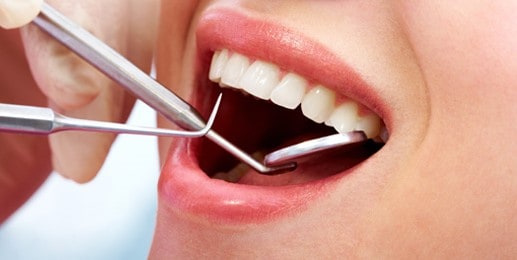Central Incisor Teeth Cavity
The central incisor teeth, located in the front and center of the mouth, play a crucial role in our ability to bite and chew food. However, they are also prone to cavities, which can lead to pain, discomfort, and even more severe dental problems if left untreated. A cavity in a central incisor tooth occurs when bacteria in the mouth produce acid, which damages the tooth enamel and creates a hole or pit. This can be caused by a variety of factors, including poor oral hygiene, a diet high in sugar and acid, and a lack of regular dental check-ups.
One of the primary challenges in treating central incisor teeth cavities is the aesthetic impact they can have. Since these teeth are visible when we smile, any discoloration or damage can be noticeable and affect our self-confidence. Furthermore, central incisors are subject to significant biting forces, which can exacerbate the cavity and lead to more extensive damage if not addressed promptly.
Causes of Central Incisor Cavities
Several factors contribute to the development of cavities in central incisor teeth:
- Poor Oral Hygiene: Failure to brush and floss regularly allows plaque and bacteria to accumulate on the teeth, leading to acid production and enamel decay.
- Diet: Consuming foods and drinks high in sugar and acid, such as sweets, soda, and sports drinks, provides a constant source of fuel for the bacteria, increasing the risk of cavities.
- Dry Mouth: Saliva helps to neutralize acids and remineralize teeth. A condition known as dry mouth, or xerostomia, reduces saliva flow, making teeth more susceptible to decay.
- Genetics: Some people may be more prone to tooth decay due to genetic factors that affect the structure of their teeth or the composition of their saliva.
- Lack of Fluoride: Fluoride is crucial for preventing tooth decay. A lack of fluoride in the diet or from other sources can increase the risk of cavities.
Symptoms of Central Incisor Cavities
The symptoms of a cavity in a central incisor tooth can vary depending on the severity of the decay. Early stages may not present any noticeable symptoms, but as the cavity progresses, individuals may experience:
- Tooth Sensitivity: Pain or discomfort when consuming hot or cold foods and drinks.
- Toothache: A sharp or dull pain in the tooth, which can be constant or intermittent.
- Visible Holes or Discoloration: In advanced cases, the cavity may be visible as a dark spot or hole on the tooth surface.
- Bad Breath: Persistent bad breath (halitosis) can be a sign of tooth decay.
Treatment Options for Central Incisor Cavities
The treatment for a central incisor cavity depends on the extent of the decay. Options range from non-invasive procedures to more complex restorations:
- Fluoride Treatments: For early stages of tooth decay, fluoride treatments can help reverse the damage by remineralizing the tooth enamel.
- Fillings: When the decay is more advanced, the dentist will remove the decayed portion of the tooth and fill it with a material such as amalgam, gold, or composite resin.
- Crowns: If the cavity is large and significant portions of the tooth are decayed, a crown may be necessary to cover and protect the tooth.
- Root Canal: In severe cases where the decay has reached the pulp of the tooth, a root canal may be required to remove the infected pulp and save the tooth.
Prevention Strategies
Preventing central incisor cavities involves a combination of good oral hygiene practices, dietary adjustments, and regular dental visits:
- Brush and Floss Regularly: Use a fluoride toothpaste and brush at least twice a day, floss once a day, and consider using an antibacterial mouthwash.
- Limit Sugary and Acidic Foods: Reduce the frequency of consuming sugary snacks and acidic beverages.
- Use a Fluoride Mouthwash: Fluoride mouthwashes can provide additional protection against decay.
- Dental Check-ups: Regular dental check-ups can help identify cavities early, when they are easier to treat.
Advanced Dental Materials and Techniques
Advancements in dental materials and techniques have significantly improved the treatment and prevention of central incisor cavities. For instance:
- Composite Resins: Modern composite resins are not only durable and resistant to wear but also match the color of natural teeth, making them ideal for fillings in visible areas like the central incisors.
- Ceramic Crowns: Ceramic crowns offer a strong, aesthetic option for restoring teeth affected by large cavities, blending in with the natural teeth and providing long-lasting results.
- Laser Dentistry: Laser technology can be used for the early detection of cavities and for the precise removal of decayed tooth material, minimizing the risk of damage to healthy parts of the tooth.
Conclusion
Cavities in central incisor teeth are a common dental issue that can be prevented and treated with the right approach. By understanding the causes, recognizing the symptoms, and adopting preventive strategies, individuals can safeguard their oral health. Regular dental check-ups are crucial for the early detection and treatment of cavities, ensuring that any issues are addressed before they become more serious. With modern dental techniques and materials, even advanced cases of tooth decay can be effectively treated, restoring both the function and the aesthetic appeal of the central incisor teeth.
What is the primary cause of cavities in central incisor teeth?
+The primary cause of cavities in central incisor teeth is the accumulation of bacteria, which produce acid and damage the tooth enamel. This can be due to poor oral hygiene, diet, and other factors.
How can central incisor cavities be prevented?
+Prevention involves regular brushing and flossing, limiting sugary and acidic foods, using fluoride mouthwash, and attending regular dental check-ups.
What are the treatment options for central incisor cavities?
+Treatment options include fluoride treatments for early stages, fillings for moderate decay, crowns for large cavities, and root canals in severe cases.
Are there any aesthetic concerns with treating central incisor cavities?
+Yes, since central incisors are visible when smiling, any treatment should also consider aesthetic factors. Modern dental materials like composite resins and ceramic crowns are designed to match the natural color and appearance of teeth.
How often should I visit the dentist to prevent central incisor cavities?
+Regular dental check-ups should be scheduled at least twice a year. However, the frequency may vary based on individual oral health needs and risk factors for tooth decay.
In conclusion, understanding and addressing central incisor cavities is crucial for maintaining oral health and aesthetics. By combining good oral hygiene practices, dietary adjustments, and regular dental visits, individuals can significantly reduce their risk of developing cavities and ensure prompt treatment when necessary. The advancements in dental technology and materials provide effective and visually pleasing solutions for cavity treatment, emphasizing the importance of proactive care in preventing and managing dental issues.


